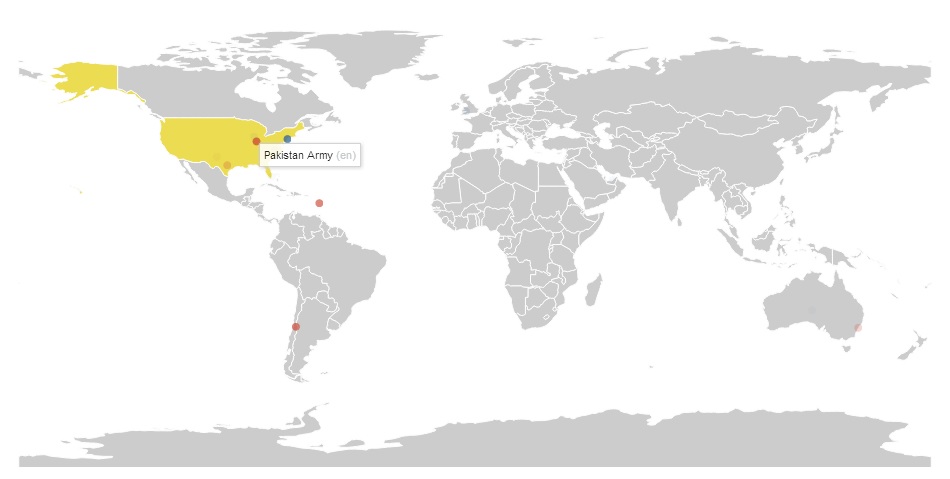Track Wikipedia Edits in Real Time With the Recent Changes Map

Wikipedia is a free, open, and editable encyclopedia that anyone around the world can change. All of these changes are tracked by Wikipedia’s edit history, and now two programmers have created a way to visually represent them.
Stephen LaPorte and Mahmoud Hashemi created the “Wikipedia Recent Changes Map,” a tool that uses JavaScript, geolocation services, and the recent changes feed from Wikimedia to plot the edits to Wikipedia articles by unregistered users in real time on a world map. Messrs. Laporte and Hashemi chose to limit the map’s tracking to unregistered users due to a belief (supported by a 2007 survey) that this class of users is less likely to make “productive” edits to articles. Wikipedia is self-policed by its user base, so discovering and correcting inaccurate or inappropriate changes is of significant importance.  With the map, Wikipedia watchdogs and average users alike can view edits from unregistered users appear in real time, both in a chronological list and as points on a world map. Those watching the map will get to see the approximate location of the computer that made the edit (provided by the IP address) and the article which was changed. Clicking the article’s link takes the user directly to Wikipedia’s revision page, where the change is highlighted for easy verification.
With the map, Wikipedia watchdogs and average users alike can view edits from unregistered users appear in real time, both in a chronological list and as points on a world map. Those watching the map will get to see the approximate location of the computer that made the edit (provided by the IP address) and the article which was changed. Clicking the article’s link takes the user directly to Wikipedia’s revision page, where the change is highlighted for easy verification.
The project is still in development and currently only tracks English, German, Russian, Japanese, Spanish, French, and Indonesian Wikipedia articles. Those interested in learning more can check out the programmers’ blog and the source code is available on github for the more technically inclined.
Even if you’re not a Wikipedia user or editor, watching the changes roll in – and seeing which topics certain parts of the world seem interested in – can be a treat that may consume a good part of your day. Check it out.
















